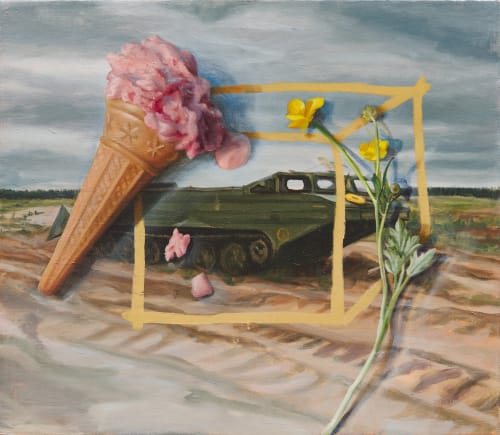Text by Angela Griffith
The term solastalgia is a hybrid of the words ‘solace’ and ‘nostalgia’ and was coined by Australian philosopher Glenn Albrecht. Albrecht sought to recognise and encapsulate how current changes in the world’s ecosystem impacts on people’s physical and mental wellbeing, namely the distress felt as familiar and cherished landscapes are irretrievably transformed due the impacts of industrialisation, and increasingly climate change, all a consequence of civilization. In addition to its academic acceptance, the concept of solastalgia has also generated responses in the creative arts.
Geraldine O’Neill is one of Ireland’s most recognisable and celebrated artists. An associate of the RHA and a member of Aosdana, her work hangs in leading cultural institutions. As an artist she is drawn to Albrecht’s theories, devising her own visual language to acknowledge and find meaning in a prevailing sense of change and loss in the world, but she ultimately counters despair and negativity.
In her distinctive painterly approach, underpinned by her conceptual and technical certainty, the backgrounds of O’Neill’s layered compositions quote and repurpose the work of past masters, such as Flemish painter Breughel, an artist who delighted in the minutiae of nature and humanity’s place within it. Found objects, such as delicate, stilled bird cadavers that were gathered with care by friends, or a discarded ice-cream are superimposed on reproductions after others. All these elements reach across time, in terms of collective histories, and for the individual they are reminded of past sensations and emotions which are reanimated through O’Neill’s colour-saturated virtuosity. Throughout her career the artist has drawn on her experiences as a mother, her children’s drawings remind adults of other times in their lives, when things appeared more straightforward and more hopeful. These childlike marks challenge the adult self, questioning the extent to which the world is a better and more sustainable place under their watch.
In addition to paintings, O’Neill is also presenting sculptural works, plaster cast portable televisions, an archaic technology, representing the pace of change in how we see, what we see, and when we see it. Their imagined ‘screens’ signifying a shared, yet diminished vision.
O’Neill is aware of those that argue that making art through traditional means such as paint and canvas is countercultural. But she believes in what she describes as ‘slow art’. It takes years to bring an exhibition such as Solastalgia into being – but she willingly pays the cost – that of time, of resources, and ultimately of self, to beguile the viewer to stop and think, to engage with the works and concepts on display. And while O’Neill’s theme is sobering, in her considered and beautifully crafted surfaces, solace and hope may be found.


